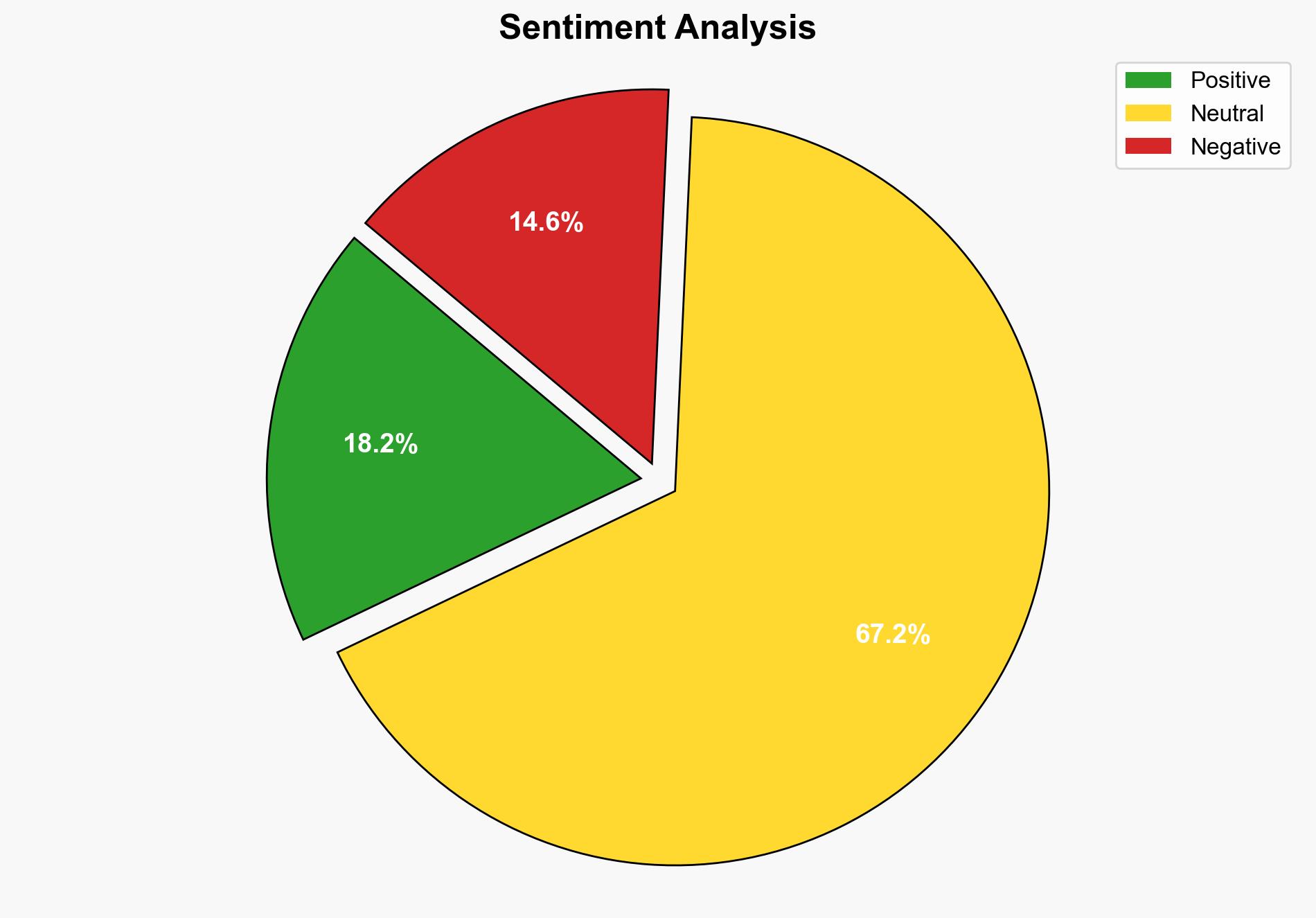What Tuesdays Election Results Mean for the 2026 Midterms – Daily Signal
Published on: 2025-11-05
Intelligence Report: What Tuesdays Election Results Mean for the 2026 Midterms – Daily Signal
1. BLUF (Bottom Line Up Front)
The most supported hypothesis suggests that the recent election results indicate a potential shift in voter sentiment towards more moderate policies, challenging the current radical narratives. Confidence Level: Moderate. Recommended action includes monitoring emerging political trends and preparing strategic responses to potential shifts in voter base dynamics.
2. Competing Hypotheses
Hypothesis 1: The election results reflect a growing dissatisfaction with radical policies, signaling a shift towards moderate political stances in upcoming elections. This hypothesis is supported by the election of candidates perceived as more centrist and the rejection of extreme policies.
Hypothesis 2: The results are an anomaly and do not indicate a significant change in voter behavior. Instead, they reflect localized issues and candidate-specific factors rather than a broader trend. This hypothesis is supported by historical patterns where midterm results do not always predict future election outcomes.
3. Key Assumptions and Red Flags
Assumptions:
– Hypothesis 1 assumes that voter dissatisfaction with radical policies is widespread and growing.
– Hypothesis 2 assumes that historical election patterns will continue to hold true.
Red Flags:
– Potential cognitive bias in interpreting election results as indicative of broader trends.
– Lack of comprehensive data on voter motivations and demographic shifts.
– Overreliance on anecdotal evidence and specific candidate narratives.
4. Implications and Strategic Risks
The election results could lead to a strategic realignment within political parties, influencing policy priorities and campaign strategies. There is a risk of increased polarization if parties misinterpret voter signals. Economic policies and social issues could become focal points, potentially impacting legislative agendas and public sentiment.
5. Recommendations and Outlook
- Monitor voter sentiment through polling and focus groups to better understand underlying motivations.
- Develop flexible strategies that can adapt to shifts in political landscapes.
- Scenario Projections:
- Best Case: Parties adjust strategies to align with moderate voter preferences, leading to more balanced governance.
- Worst Case: Misinterpretation of results leads to increased polarization and legislative gridlock.
- Most Likely: Incremental shifts in party platforms with moderate influence on policy direction.
6. Key Individuals and Entities
– Glenn Youngkin
– Abigail Spanberger
– Mikie Sherrill
– Zohran Mamdani
– Jay Jones
– Josh Shapiro
– Alexandria Ocasio-Cortez
7. Thematic Tags
national security threats, political strategy, voter behavior, electoral trends




